A developed version of the original V-173 prototype, the XF5U-1 was a larger aircraft. Of all-metal construction, it was almost five times heavier, with two 1,400 hp (1,193 kW) Pratt & Whitney R-2000 radial engines. The configuration was designed to create a low aspect ratio aircraft with low takeoff and landing speeds but high top speed. The aircraft was designed to keep the low stall speed and high angle of attack from the V-173 prototype while providing for better pilot visibility, cockpit comfort, less vibration, and provisions to install armament. This included a cockpit redesign moving the cockpit from the leading edge of the wing to a nose nacelle that extended further in front of the leading edge. The arrestor hook was changed to a dorsal hook that would diminish the drag from the apparatus.
Normally, a wing with such a low aspect ratio will suffer from very poor performance due to the degree of induced drag created at the wingtips, as the higher pressure air below spills around the wingtip to the lower-pressure region above. In a conventional aircraft, these wingtip vortices carry a lot of energy with them and hence create drag. The usual approach to reducing these vortices is to build a wing with a high aspect ratio, i.e. one that is long and narrow. However, such wings compromise the maneuverability and roll rate of the aircraft, or present a structural challenge in building them stiff enough. The XF5U attempted to overcome the tip vortex problem using the propellers to actively cancel the drag-causing tip vortices. The propellers are arranged to rotate in the opposite direction to the tip vortices, with the aim of retaining the higher-pressure air below the wing. With this source of drag eliminated, the aircraft would fly with a much smaller wing area, and the small wing would yield high maneuverability with greater structural strength.
The propellers envisioned for the completed fighter — unlike the torque-reducing counter-rotating propellers of the V-173 design — were to have a built-in cyclic movement like a helicopter's main rotor, with a very limited ability to shift their center of lift up and down to aid the aircraft in maneuvering. Initially, the aircraft used propellers originally designed for the V-173 prototype. These propellers would be replaced with propellers taken from the Vought F4U-4 Corsair. An ejection seat was fitted to allow the pilot to clear the massive propellers in the event of an in-flight emergency. Although the prototype was unarmed, a combination of six M2 Browning 50-caliber machine guns or four M3 20 mm cannons would be mounted in the wing roots in service.
Features:
Full interior
Close to accurate top speed
Tilting propellers to replicate real capability
Armed with guns.
Standard control layout.


Specifications
Spotlights
- Trainzo 1.3 years ago
- VenusLancer 1.3 years ago
- Erc90F4RU 1.3 years ago
General Characteristics
- Created On Android
- Wingspan 32.9ft (10.0m)
- Length 28.5ft (8.7m)
- Height 12.3ft (3.8m)
- Empty Weight 13,225lbs (5,998kg)
- Loaded Weight 16,046lbs (7,278kg)
Performance
- Horse Power/Weight Ratio 0.174
- Wing Loading 52.0lbs/ft2 (253.7kg/m2)
- Wing Area 308.8ft2 (28.7m2)
- Drag Points 2079
Parts
- Number of Parts 247
- Control Surfaces 6
- Performance Cost 1,018

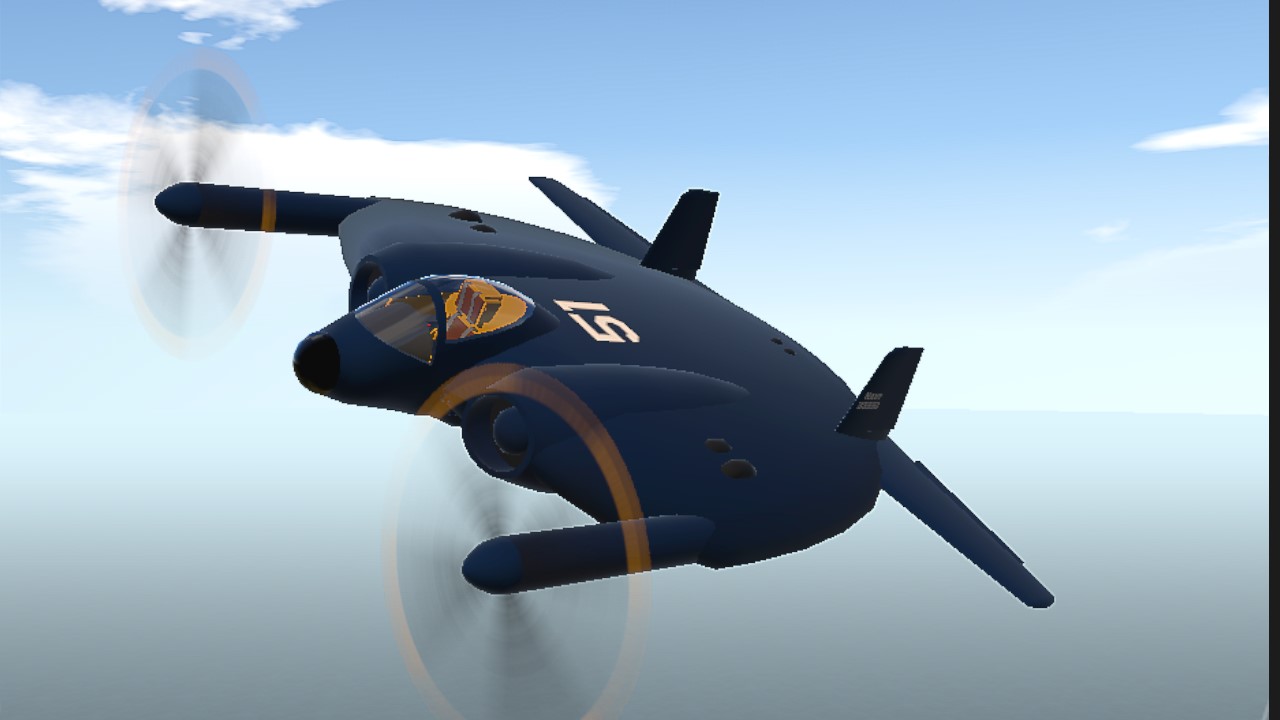
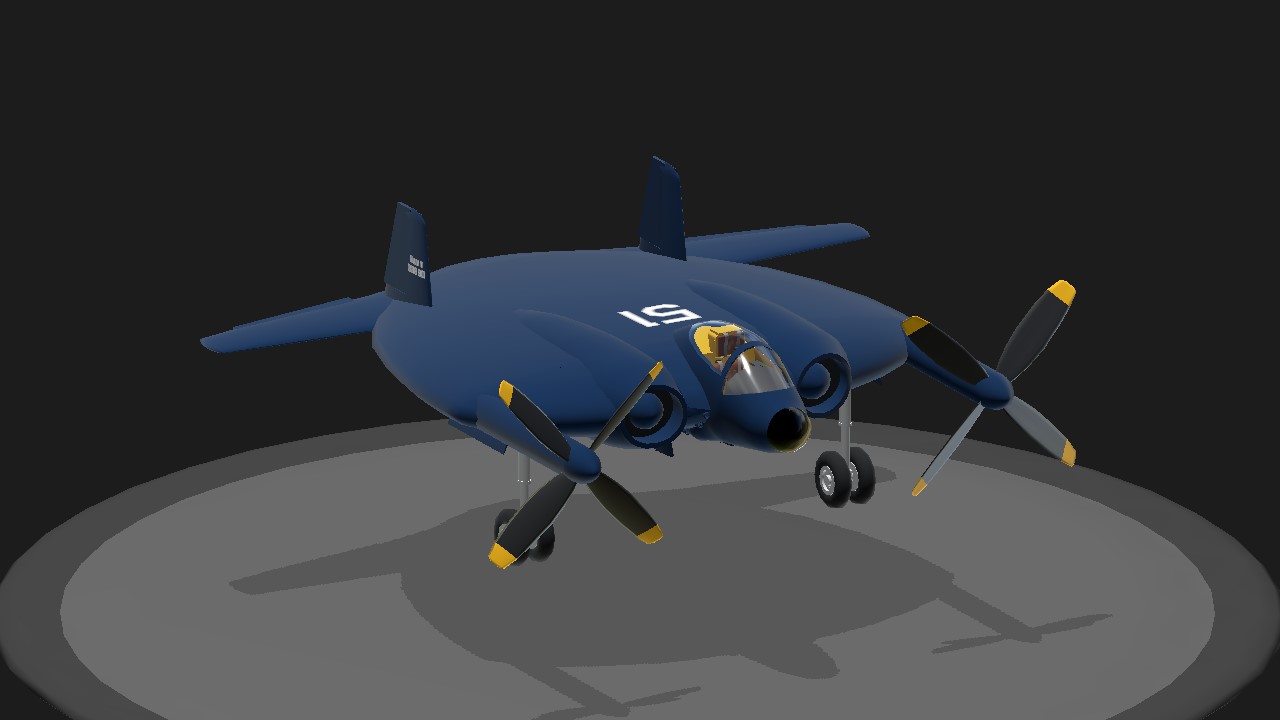
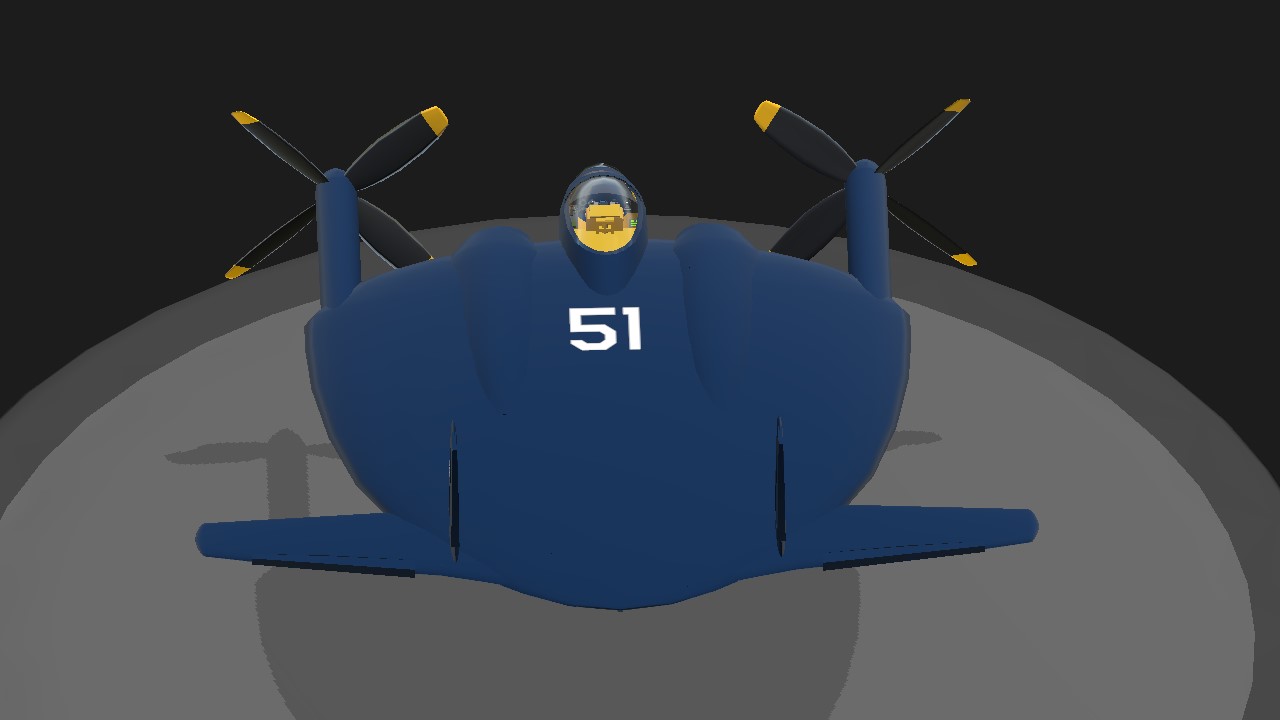
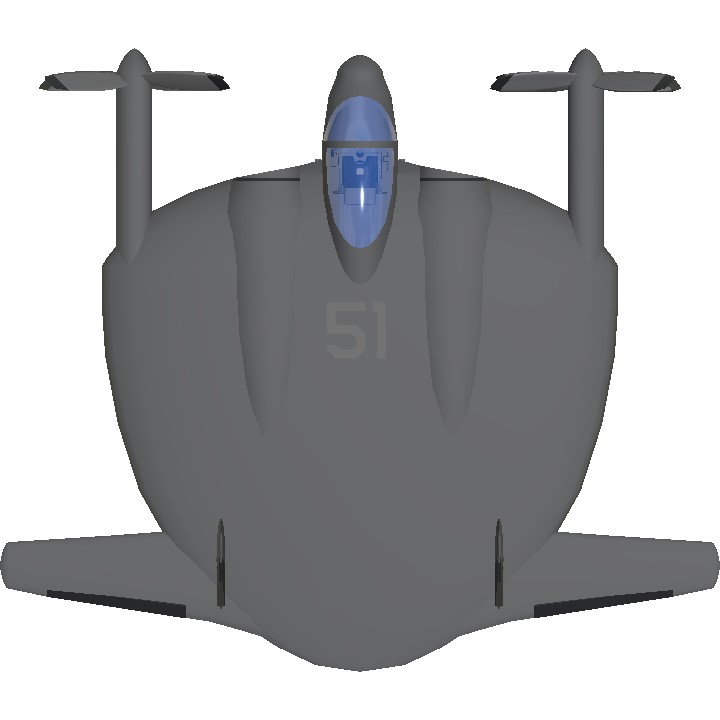

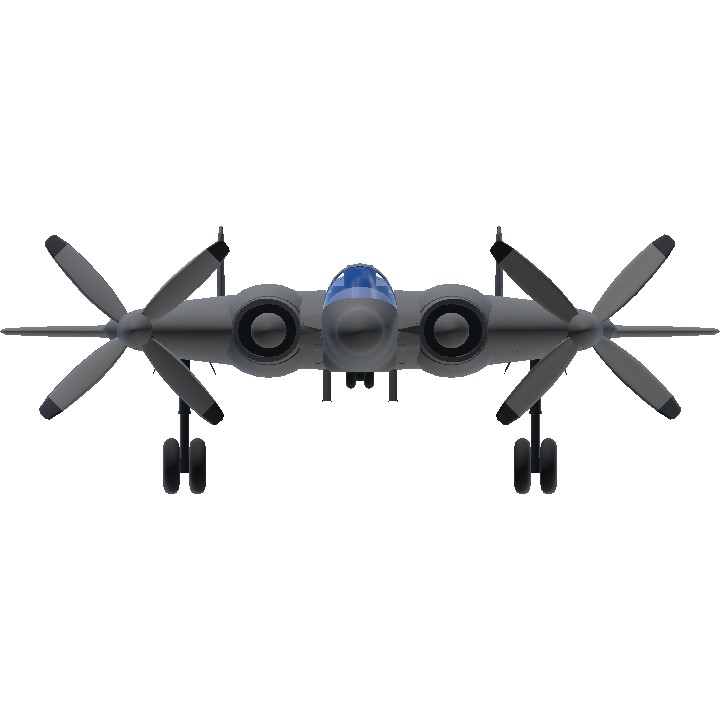
Ah yes, the Flying Pancake.
Very great build .
@ToeTips